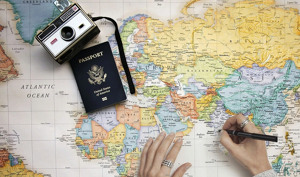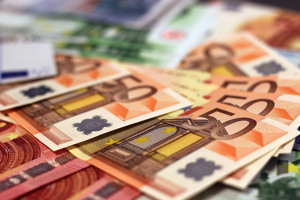Tavex uses cookies to ensure website functionality and improve your user experience. Collecting data from cookies helps us provide the best experience for you, keeps your account secure and allows us to personalise advert content. You can find out more in our cookie policy.
Please select what cookies you allow us to use
Cookies are small files of letters and digits downloaded and saved on your computer or another device (for instance, a mobile phone, a tablet) and saved in your browser while you visit a website. They can be used to track the pages you visit on the website, save the information you enter or remember your preferences such as language settings as long as you’re browsing the website.
| Cookie name | Cookie description | Cookie duration |
|---|---|---|
| tavex_cookie_consent | Stores cookie consent options selected | 60 weeks |
| tavex_customer | Tavex customer ID | 30 days |
| wp-wpml_current_language | Stores selected language | 1 day |
| AWSALB | AWS ALB sticky session cookie | 6 days |
| AWSALBCORS | AWS ALB sticky session cookie | 6 days |
| NO_CACHE | Used to disable page caching | 1 day |
| PHPSESSID | Identifier for PHP session | Session |
| latest_news | Helps to keep notifications relevant by storing the latest news shown | 29 days |
| latest_news_flash | Helps to keep notifications relevant by storing the latest news shown | 29 days |
| tavex_recently_viewed_products | List of recently viewed products | 1 day |
| tavex_compare_amount | Number of items in product comparison view | 1 day |
| Cookie name | Cookie description | Cookie duration |
|---|---|---|
| chart-widget-tab-*-*-* | Remembers last chart options (i.e currency, time period, etc) | 29 days |
| archive_layout | Stores selected product layout on category pages | 1 day |
| Cookie name | Cookie description | Cookie duration |
|---|---|---|
| cartstack.com-* | Used for tracking abandoned shopping carts | 1 year |
| _omappvp | Used by OptinMonster for determining new vs. returning visitors. Expires in 11 years | 11 years |
| _omappvs | Used by OptinMonster for determining when a new visitor becomes a returning visitor | Session |
| om* | Used by OptinMonster to track interactions with campaigns | Persistent |
| Cookie name | Cookie description | Cookie duration |
|---|---|---|
| _ga | Used to distinguish users | 2 years |
| _gid | Used to distinguish users | 24 hours |
| _ga_* | Used to persist session state | 2 years |
| _gac_* | Contains campaign related information | 90 days |
| _gat_gtag_* | Used to throttle request rate | 1 minute |
| _fbc | Facebook advertisement cookie | 2 years |
| _fbp | Facebook cookie for distinguishing unique users | 2 years |
Essential Travel Guide for Planning a Seamless Europe Trip

Travel truly broadens the mind, and nothing compares to the thrill of visiting new destinations, exploring diverse cultures, and interacting with people from different nationalities. This is precisely why active vacations like road trips and sightseeing tours around Europe are gaining massive popularity. From witnessing ever-changing landscapes to experiencing various cuisines and customs in a single journey, a Eurotrip promises memories that last a lifetime.
But how do you plan a trip around Europe while minimising stress and maximising enjoyment? Here’s your ultimate guide to organising a sightseeing tour across Europe, packed with practical advice, money-saving tips, and essential travel insights.
Why Europe Trips Are the Ultimate Travel Experience
A Eurotrip offers unmatched variety. One day, you might be wandering the cobbled streets of Paris; the next, sipping espresso in Rome or hiking the Swiss Alps. Traveling by car or train gives you a front-row seat to Europe’s natural and cultural wonders. From spontaneous accommodation finds to navigating new languages and tasting authentic local dishes, these immersive experiences create a uniquely rich vacation.
What You Need to Know Before Your Sightseeing Tour in Europe

1. Plan Your Itinerary Wisely
Start by mapping out your route. Decide how many countries or cities you’d like to visit, how much time you want to spend in each, and your preferred modes of transport – car, train, or plane. Research visa requirements, travel regulations, and border controls between countries.
2. Don’t Forget the Essentials
- Valid ID or Passport: For EU citizens, an ID card often suffices for travel within the Schengen Area.
- Travel Insurance: Ensure you’re covered in case of emergencies.
- Local Laws & Toll Systems: Understand road tolls and driving regulations in each country, some use vignettes, others have toll booths.
Euro Currency: Why Carrying Cash Still Matters
In our increasingly cashless society, it’s tempting to rely solely on payment cards. However, when it comes to traveling across Europe, having euros in cash remains a smart and necessary choice.
Here’s why:
- Reliable Everywhere: Cash is accepted even in remote towns or roadside shops with no card terminals.
- Avoid High ATM Fees: Many foreign ATMs charge hefty fees for withdrawals.
- Backup During Technical Failures: Be independent of card rejections or malfunctioning terminals.
- Popular Payment Method: According to the 2022 Study on the Payment Attitudes of Consumers in the Euro Area (SPACE), 59% of all point-of-sale payments are still made in cash.
Where to Buy Euros for Your Europe Trip?

Before you embark on your journey, it’s crucial to purchase euros in advance to avoid last-minute hassles or unfavourable exchange rates at airports and hotels.
Purchase Euros directly from Tavex Hatton Garden office. Tavex offers a wide range of other currencies including:
AED – United Arab Emirates Dirham
AUD – Australian Dollar
BGN – Bulgarian Lev
BHD – Bahraini Dinar
BRL – Brazilian Real
CAD – Canadian Dollar
CHF – Swiss Franc
CLP – Chilean Peso
CNY – Chinese Yuan Renminbi
CZK – Czech Koruna
DKK – Danish Krone
EGP – Egyptian Pound
EUR – Euro
HUF – Hungarian Forint
IDR – Indonesian Rupiah
ILS – Israeli New Shekel
INR – Indian Rupee
JPY – Japanese Yen
KRW – South Korean Won
MXN – Mexican Peso
NOK – Norwegian Krone
NZD – New Zealand Dollar
PLN – Polish Zloty
QAR – Qatari Riyal
RON – Romanian Leu
SAR – Saudi Riyal
SEK – Swedish Krona
SGD – Singapore Dollar
THB – Thai Baht
TRY – Turkish Lira
USD – United States Dollar
ZAR – South African Rand
Road Tolls and Travel Fees in Europe: What to Expect
While countries like Germany offer toll-free highways, most others charge for road use. Here’s what to look out for:
- Vignettes Required in Austria, Bulgaria, Czech Republic, Romania, Slovakia, Slovenia, Switzerland, and Hungary.
- Toll Booths in countries like Greece, Italy, France, and Croatia.
- Special Fees for bridges, tunnels, and city zones in certain regions.
Research these details in advance to avoid fines or travel delays.
Countries Where You Can Pay in Euros

The euro is the official currency of 19 EU member states, including:
- France, Germany, Spain, Italy, Austria, Belgium, Ireland, Netherlands, and more.
In these countries, using euros is effortless, especially for small purchases like snacks, souvenirs, or local transport.
However, some European destinations are not in the eurozone, including:
- Poland, Hungary, Czech Republic, Denmark, and Sweden
While some of these countries may accept euros in tourist areas, it’s advisable to exchange currency for the best rates and local convenience.
Final Tips for a Smooth European Vacation
- Check the Weather: Pack appropriately to stay comfortable during travel.
- Know Local Prices: Research typical costs for food, transport, and activities in each country to budget effectively.
- Read Up on Travel Guides: Check out guides for country-specific travel advice.
Conclusion: One Trip, Countless Possibilities
A well-planned Eurotrip lets you explore multiple countries, cultures, and cuisines in a single vacation. But preparation is key. From route planning and documentation to currency exchange and toll fees, taking the time to prepare ensures a stress-free and enriching European adventure.
So stock up on euros, plan your route, and get ready for a sightseeing tour around Europe you’ll never forget!

















